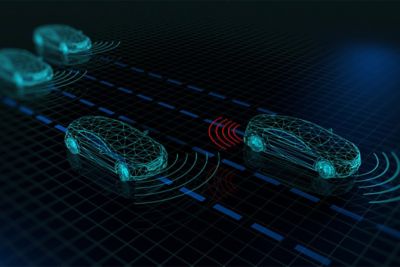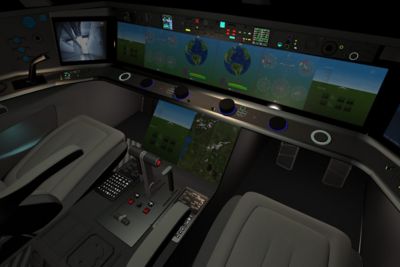-
United States -
United Kingdom -
India -
France -
Deutschland -
Italia -
日本 -
대한민국 -
中国 -
台灣
-
Ansys stellt Studierenden auf dem Weg zum Erfolg die Simulationssoftware kostenlos zur Verfügung.
-
Ansys stellt Studierenden auf dem Weg zum Erfolg die Simulationssoftware kostenlos zur Verfügung.
-
Ansys stellt Studierenden auf dem Weg zum Erfolg die Simulationssoftware kostenlos zur Verfügung.
-
Kontakt -
Karriere -
Studierende und Akademiker*innen -
Für die Vereinigten Staaten und Kanada
+1 844,462 6797
Ansys + Innoviz Technologies
Enabling the Autonomous Vehicle Revolution
With human error accounting for many if not most traffic accidents, fully autonomous vehicles offer a vision of safer roads. Lidar plays a central role in autonomous driving technology because it provides high-resolution, long-range 3D image perception. Lidar determines the variable distance of an object to a vehicle by calculating the time it takes for a pulsed laser that sends light beams out in all directions to bounce back to the laser scanner. But despite being a critical technology, most lidar products today are too expensive, too large, or too unreliable for mass market.
Innoviz Technologies is using the Ansys ecosystem to advance a lidar that meets performance, reliability, size, and cost requirements in a more compact design. Producing a new part design can take from weeks to months, so every part needs to be designed to the best possible degree of accuracy before it is released to production. Innoviz turned to Ansys simulation software to manage product validation to hit their design target of validating each sample the first time around and support their entirely new, unique design concept in lidar technology.

“We use many types of simulations in the Ansys ecosystem across the entire design chain of our product. We rely on Ansys capabilities to run structural analysis to understand the stresses and temperature variations of our chips. We also use Ansys for dynamic simulation to understand vibration characteristics, and thermal simulation to see if we can dissipate the amount of power from the main components inside, like the laser. Ansys provides excellent simulation software, and we value their experience in the automotive space to help us solve our biggest design challenges.”
Oren Buskila
Chief R&D officer and co-founder at Innoviz Technologies

InnovizOne solid-state lidar
To design a high-performing, reliable, automotive-grade lidar small enough to satisfy consumer price perceptions, Innoviz used Ansys software to support an entirely new, unique design concept in lidar technology. Most lidars are spinning systems driven by a big motor with many lasers and detectors affixed to them. Innoviz Technologies replaced this system with a single scanning element and fewer lasers, further scaling back to a much smaller, less expensive, and far more reliable lidar. To support their innovative lidar system, Innoviz relies on Ansys simulation solutions for testing and validation across the whole design chain of their products. Ansys Mechanical is used for both the mechanical and optical system parts that make up the lidar — for structural analysis to determine mechanical robustness and stability of a part, and dynamic simulation to assess behavior under vibration. Innoviz Technologies’ product development team also uses Mechanical for thermal simulation to see how much power can be dissipated from the main components inside. Additionally, Ansys Fluent is used as part of thermal analysis to simulate airflow inside and over the unit, and simulation tools such as Ansys Maxwell for parts that have electromagnetic elements to their operation. And with Ansys Zemax software, Innoviz can run both sequential optical simulation and non-sequential optical simulation to simulate both the desired path of light integral to object detection, as well as the non-desired stray light, that needs to be minimized by design.
Learn More
Ready to make the impossible possible?
Ready to make the impossible possible?
Start the Conversation
Danke für die Kontaktaufnahme
Wir sind hier, um Ihre Fragen zu beantworten und freuen uns auf das Gespräch mit Ihnen. Ein*e Mitarbeiter*in unseres Ansys-Verkaufsteams wird sich in Kürze mit Ihnen in Verbindung setzen.

















